Split
Records in a selection can be "split" based on all available entities within the available sources.
Drag a split block to the selection screen and connect an input (selection) block to the split block.

Double-click on the split block to open the settings.
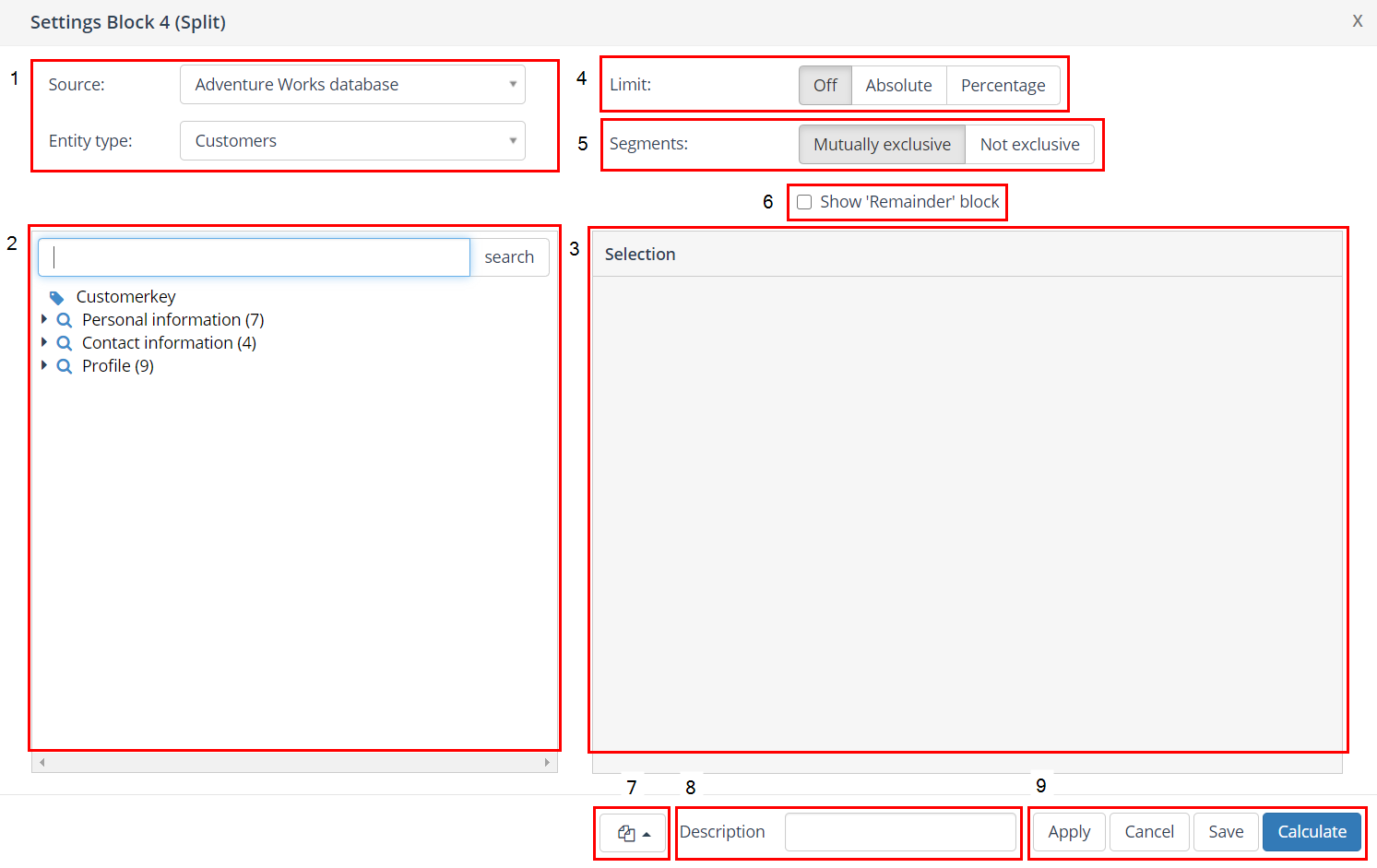
Source/ Entity
First, select the source in which the split should take place.
More details: Source/ Entity/ Key.
Search/Select Entities
This part of the screen shows the different entities available to search and select. You can search for entities in several ways: (1) by scrolling the list, (2) by expanding the entity tree, or (3) via the search field.
More details: Search/Select Entities.
Define selection/ Split criteria
In this window, you can define the conditions on which the split will take place.
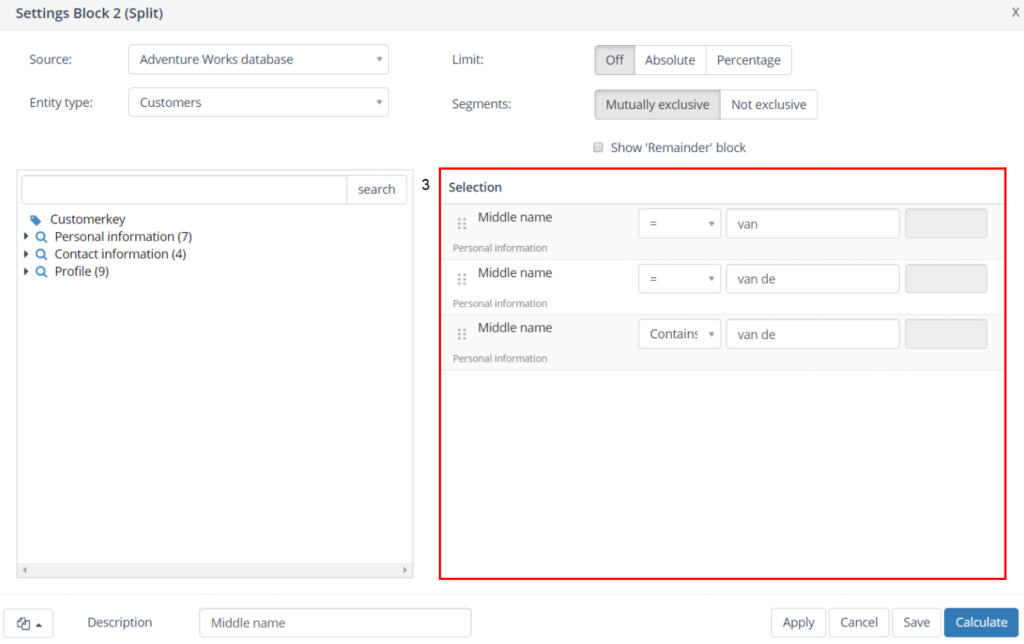
In the above example, the selection is split based on insertion and the records are split into three groups.
More details: Define Selection Conditions.
Limit
Indicate in every split block whether the number of records should be limited or not by using the ‘Limit’ function.
First (4a) select ‘Absolute’ or ‘Percentage’.
Then provide the absolute number or percentage per segment (4b).
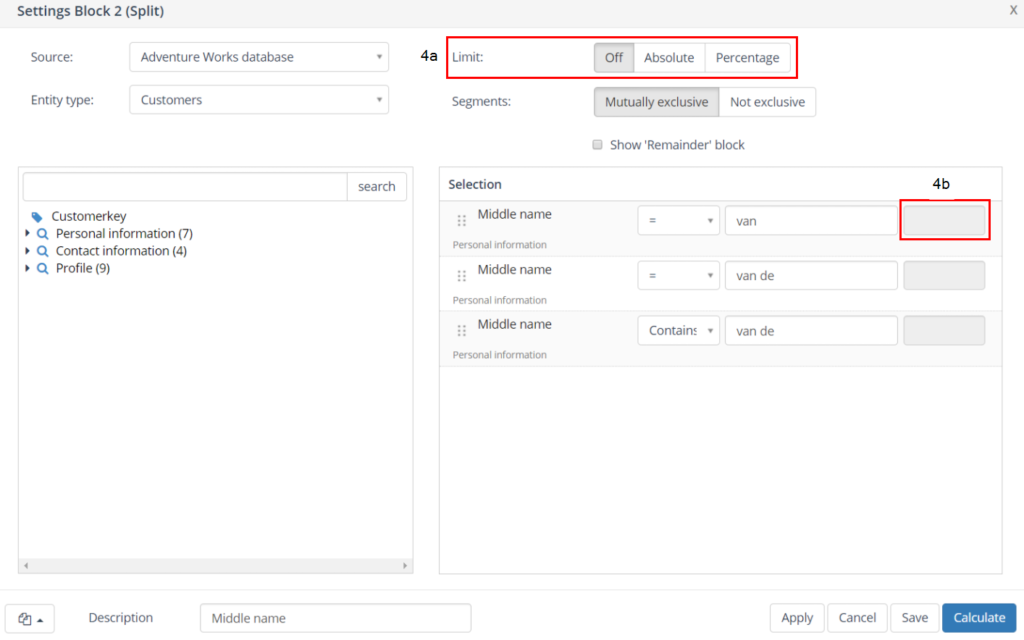
More details: Limiet.
Segments: Mutually exclusive/ Not exclusive
By default the different output blocks, or segments, are mutually exclusive. A record will only occur in one segment with this setting even when it meets multiple criteria. The selection criteria are executed top down, thus the order of the criteria is of interest to the outcome of the split.
The order can be changed by right clicking on a selection criteria and moving it up, down, to top, to bottom or removing it all together (or by dragging the criteria up or down in the list).
When the ‘Not exclusive’ option is selected, records can occur in multiple split blocks.
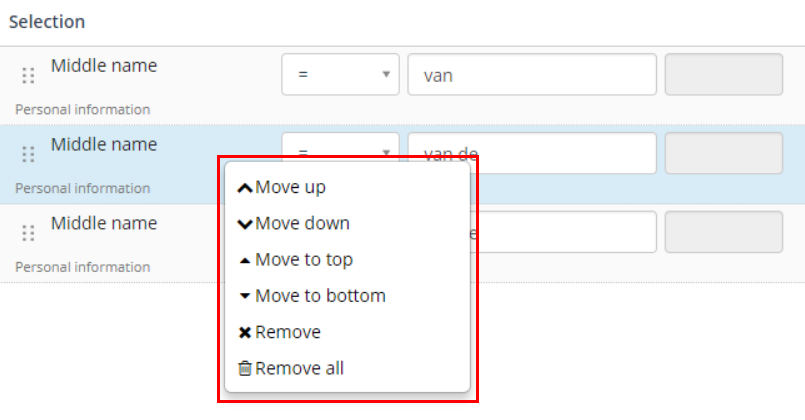
Show ‘Remainder’ block
By checking the 'Show Remainder' block option, an 'Remainder' block is added to the output of the split. This block contains the records that do not meet any of the specified conditions.
Please note: that this can also be 0. The 'Remainder' block can be identified by the different shape of the block compared to the other split blocks.
Records that do not appear in the source on which you perform the split are now automatically added to the 'Remainder' block.
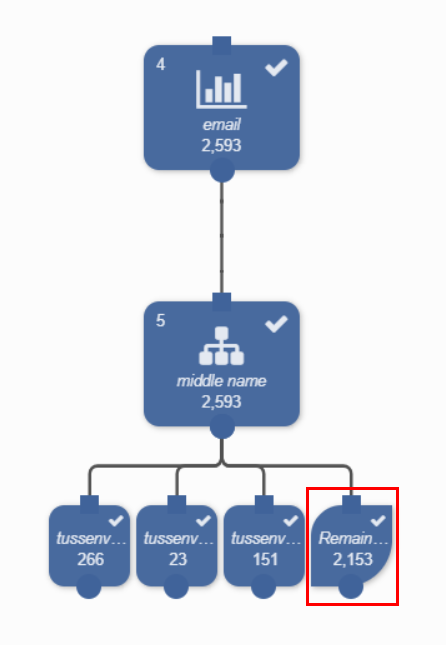
Block template
More details: Block template.
Description
More details: Description.
Apply/ Cancel/ Save/ Calculate
The split block will be saved and executed immediately after clicking the "Calculate" button.
A segment block is created for each group.
When "Show Other Block" is selected, a count of the remaining records ("Other") is created. This remaining segment contains all records (from the input block) that do not meet the established selection conditions in the split block.
More details: Apply/ Cancel/ Save/ Calculate.
Example – Mutually exclusive
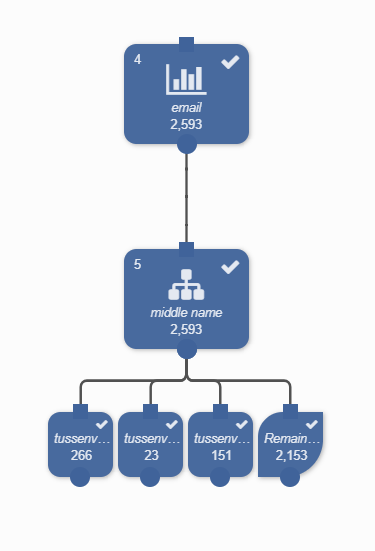
The split-block is split into four segment-blocks, the total of the split blocks is equal to the total number of records in the input block. The 2.593 records are now broken down into 266 records having middle name is ‘van’, 23 records having middle name ‘van de’, 151 records having middle name contains ‘van de’ (but is not equal to ‘van de’) and 2.153 records that do not meet any of the three specified definitions.
Example – Not exclusive
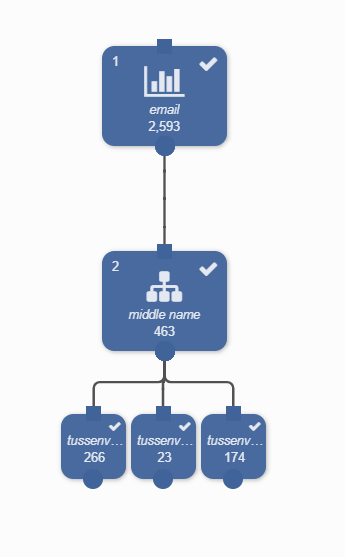
The input for the split contains 2.593 records. These are split into 266 records having the middle name ‘van’, 23 records having the middle name ‘van de’ and 174 (151+23) records containing the middle name ‘van de’.
Please note: the records within the three selection criteria are not excluded on each other. The example shows that the records having middle name ‘van de’ are both counted in the criteria middle name = ‘van de’ as well as containing ‘van de’.